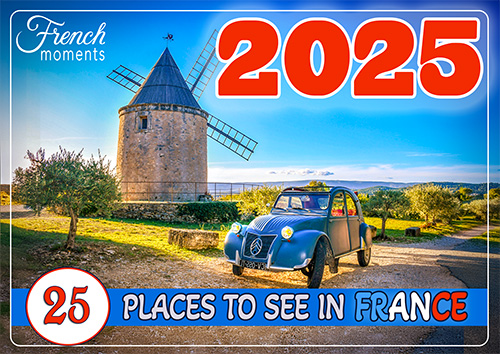In Strasbourg, the Petite France district is arguably the city’s most romantic district, especially at nightfall. A succession of canals along which have been built beautiful half-timbered houses gives the district an undeniable charm.
The Origins of the Petite France district
La Petite France was the corner of fishermen, tanners and millers. In the 16th century, a hospital was established here for the soldiers of the King of France, François I.
At this time, Strasbourg was still a Free City in the Holy Roman Empire.
Many French king soldiers were afflicted with venereal diseases contracted during the Italian Wars. This disease was locally known as “the French Illness” by the population of Strasbourg, who was convinced it was France’s fault. The Grand Magistrate of the city decided to isolate the sick people in a building in the Tanners’ district.
The expression “Petite France” created by the inhabitants to refer to the hospital has, over time, been applied to the whole district.
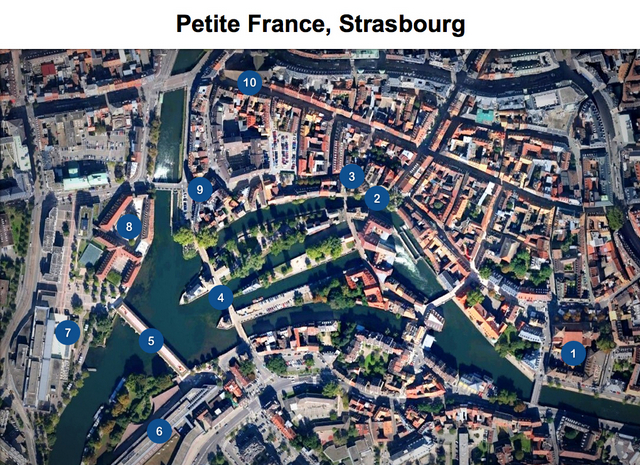
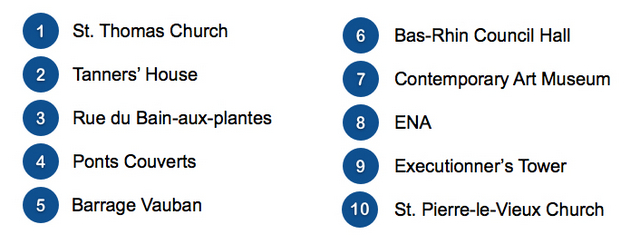
The main sites of Strasbourg’s Petite France
The Petite France district of Strasbourg has many historical and cultural sites worth visiting. Here’s a little selection:
St. Thomas Church
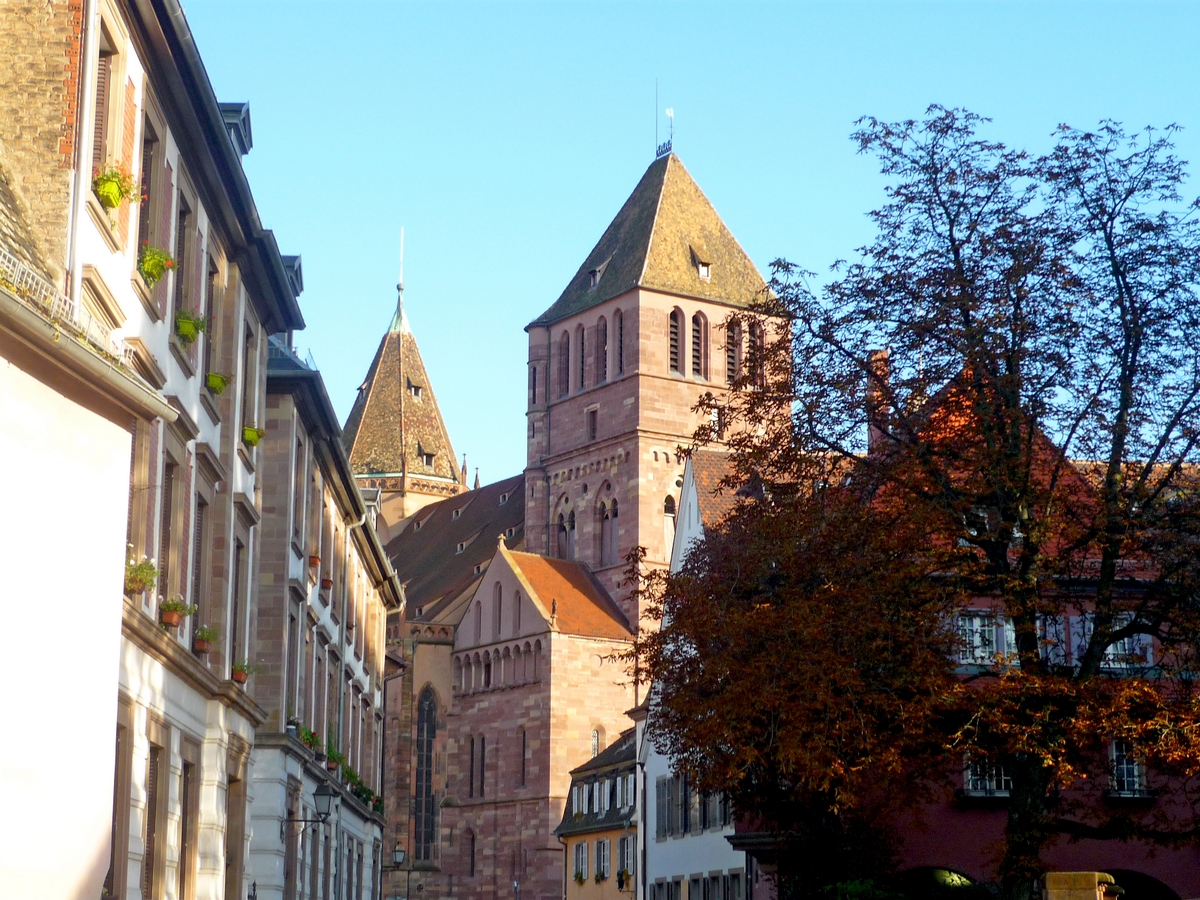
Saint-Thomas Church is Strasbourg’s main Protestant church. It is located in the district’s far East.
Architecture of the church
The church dates back to the end of the 12th century and began holding Protestant services in 1529. It is easily recognisable thanks to its two massive Romanesque bell towers, one square-shaped and standing above the main entrance and the other hexagonal at the transept crossing.
Saint Thomas is a church hall of late Gothic style: its five naves are of equal height and length. This conception was widespread in Rhineland, Lorraine and Holland in the 16th century.
The mausoleum of Maréchal de Saxe
The most famous monument inside the church is the imposing mausoleum of the Maréchal de Saxe (Marshal of Saxe), sculpted entirely in white marble by Jean-Baptiste Pigalle in 1776. In the late baroque style, it is designed as a proper theatrical staging. The Marshal is standing, surrounded by animals, symbolising the nations he conquered throughout his military career to the service of Louis XV.
The Silbermann organ
The church’s Silbermann organ (1741) is renowned for its beauty and tone. While passing through Strasbourg in 1778, Mozart acknowledged its extraordinary sound, and the Nobel Prize winner Albert Schweitzer frequently played it during his stays in Strasbourg.
Around the Tanners’ House
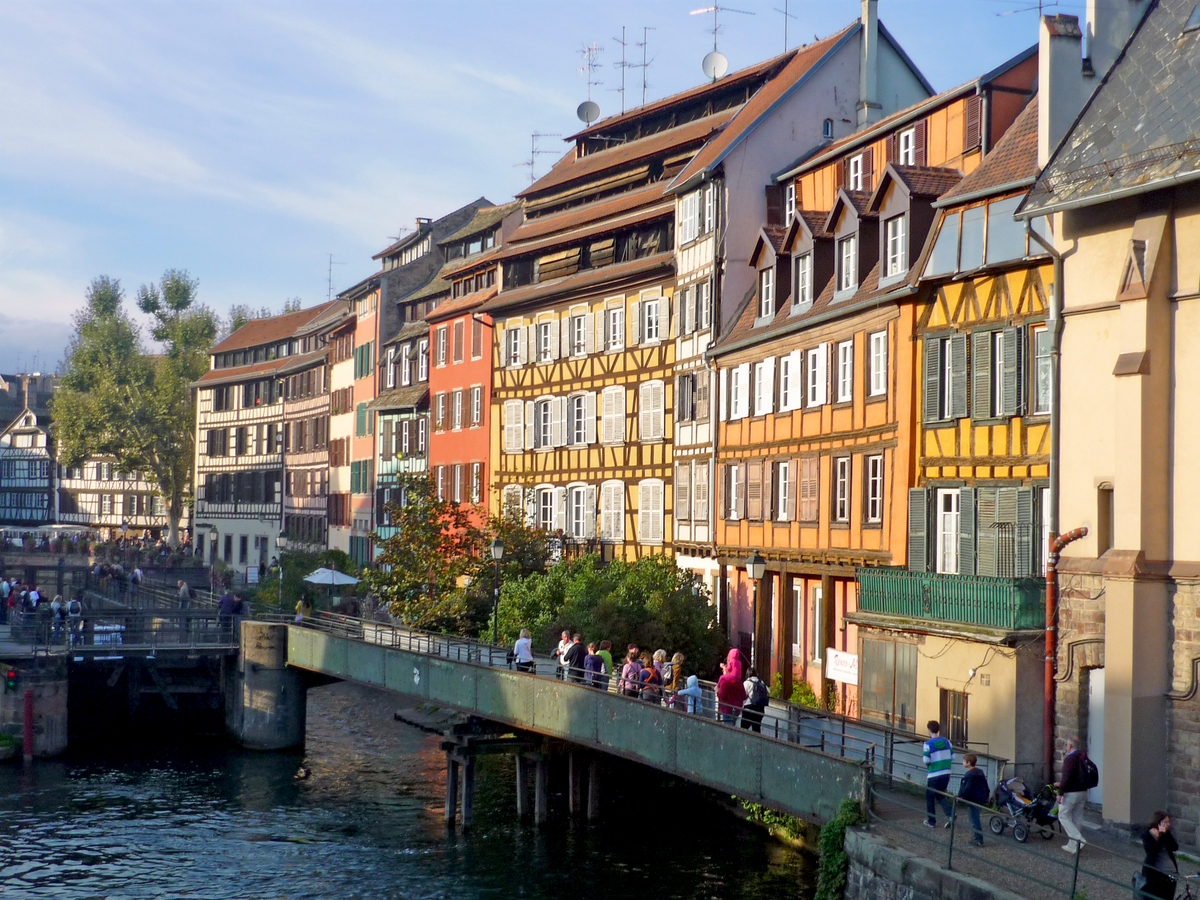
You must take the time to stroll along the banks of the navigation channel and appreciate the reflections of the half-timbered houses in the water. The pretty medieval houses of the district date from the 16th and 17th centuries and half-timbering is magnificently decorated. Their steep roofs are open over the attics where skins used to dry.
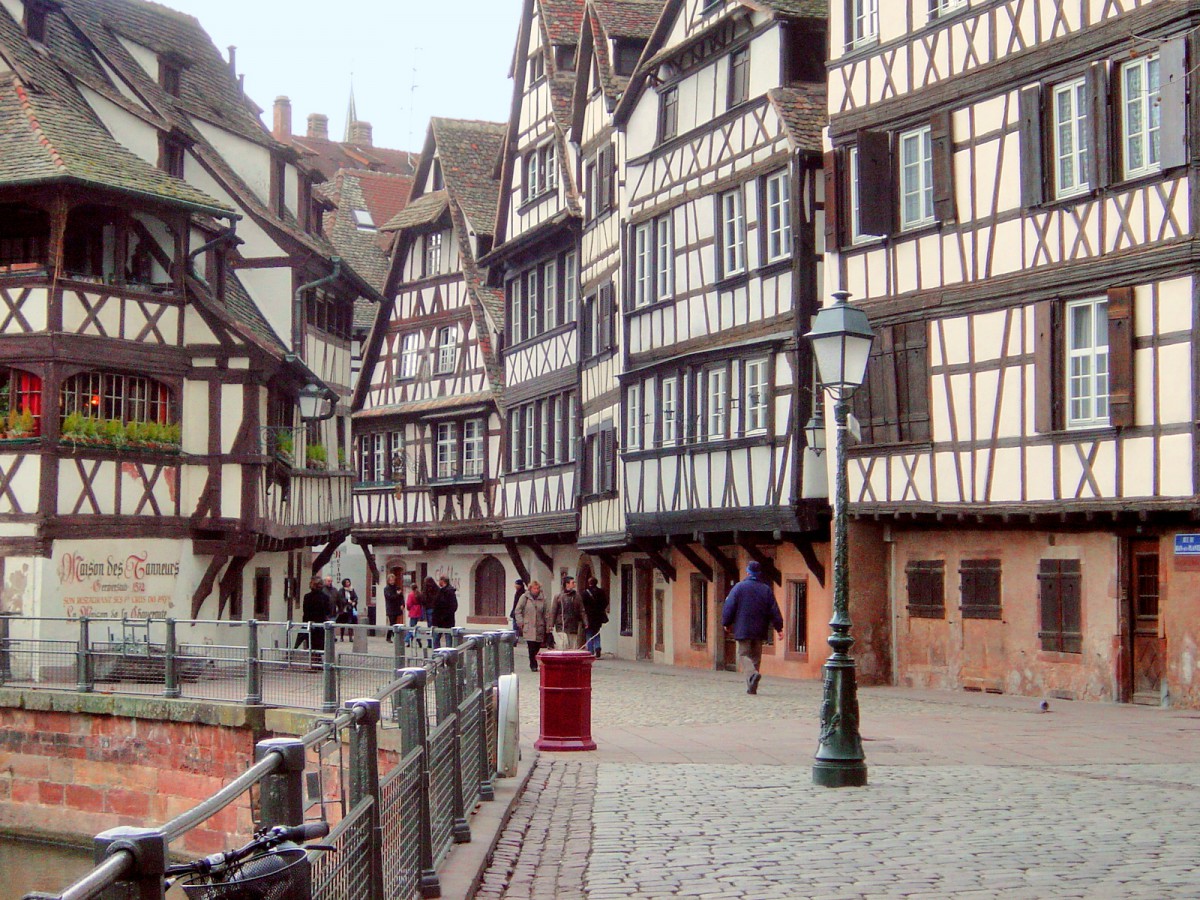
The Tanners’ House (Maison des Tanneurs) is one of these houses romantically built on the water’s edge. It was the former headquarters of the city’s Tanners Guild and today houses a restaurant.

Another building, the famous Haderer House, is a beautiful example of Renaissance architecture in the Rhineland.
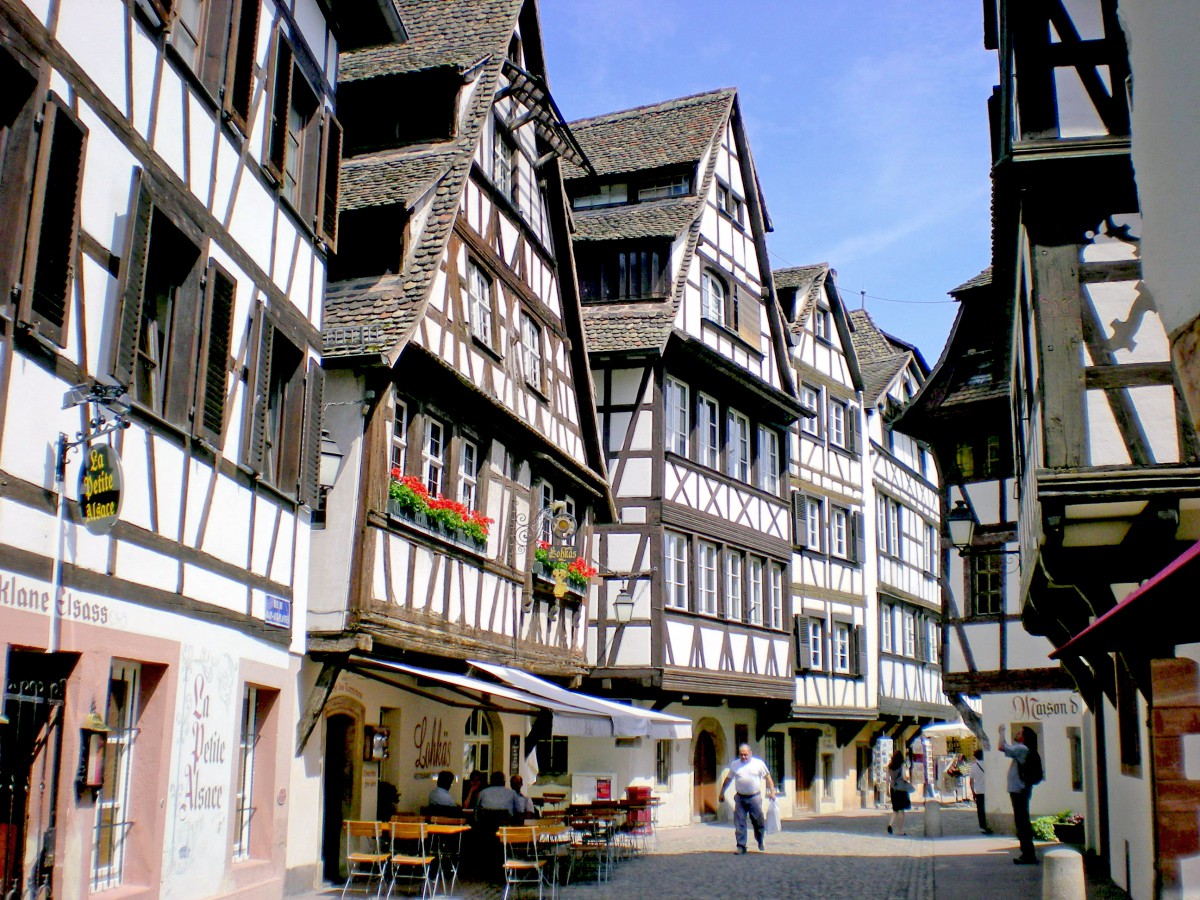
To better appreciate the beautiful half-timbered houses, it is recommended that you walk along the street from rue du Bain-aux-Plantes towards the Ponts Couverts (Covered Bridges).
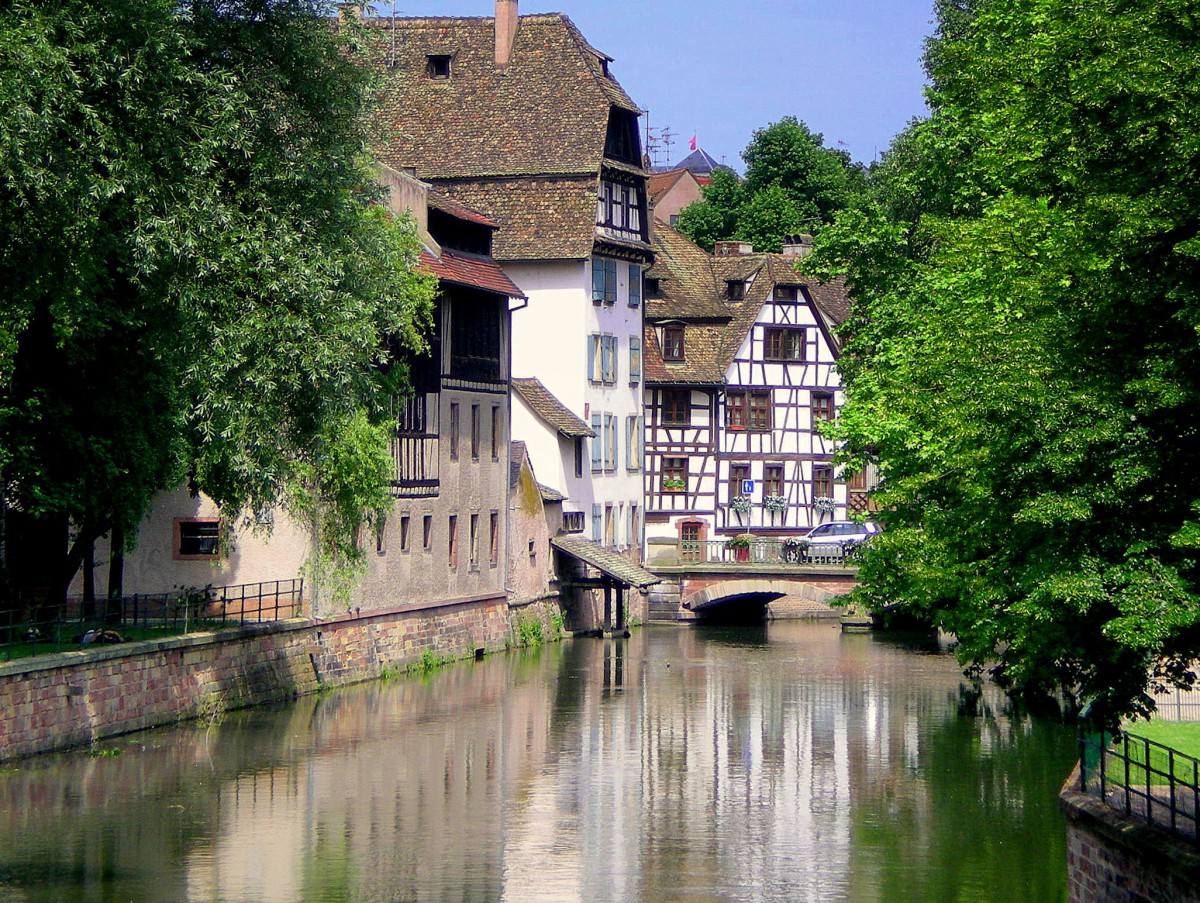
Les Ponts Couverts – the Covered Bridges
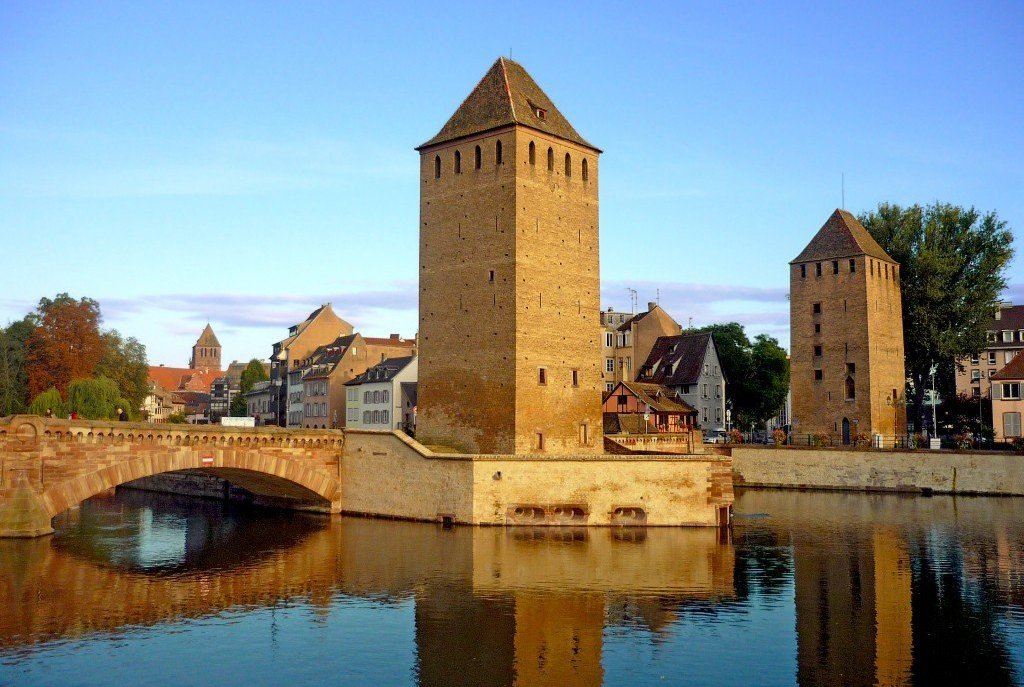
At the end of the Petite France district, the Ponts Couverts (Covered Bridges) depict another cherished postcard image of Strasbourg. Three 14th-century towers dominate this succession of three bridges linking arms with the Ill River. They are the remains of the ancient medieval ramparts totalled 90 towers. A wooden roof once capped the bridges themselves. Despite the disappearance of this cover in the 18th century, the Strasbourgeois still call them “covered bridges”.
The Covered Bridges protected fluvial access to the Free City of Strasbourg, which benefited from considerable autonomy, allowing the establishment of its customs. This obligatory checkpoint between the wealthy Alsatian cities upstream from the Ill River and the Rhine contributed to Strasbourg’s commercial prosperity in the Middle Ages.
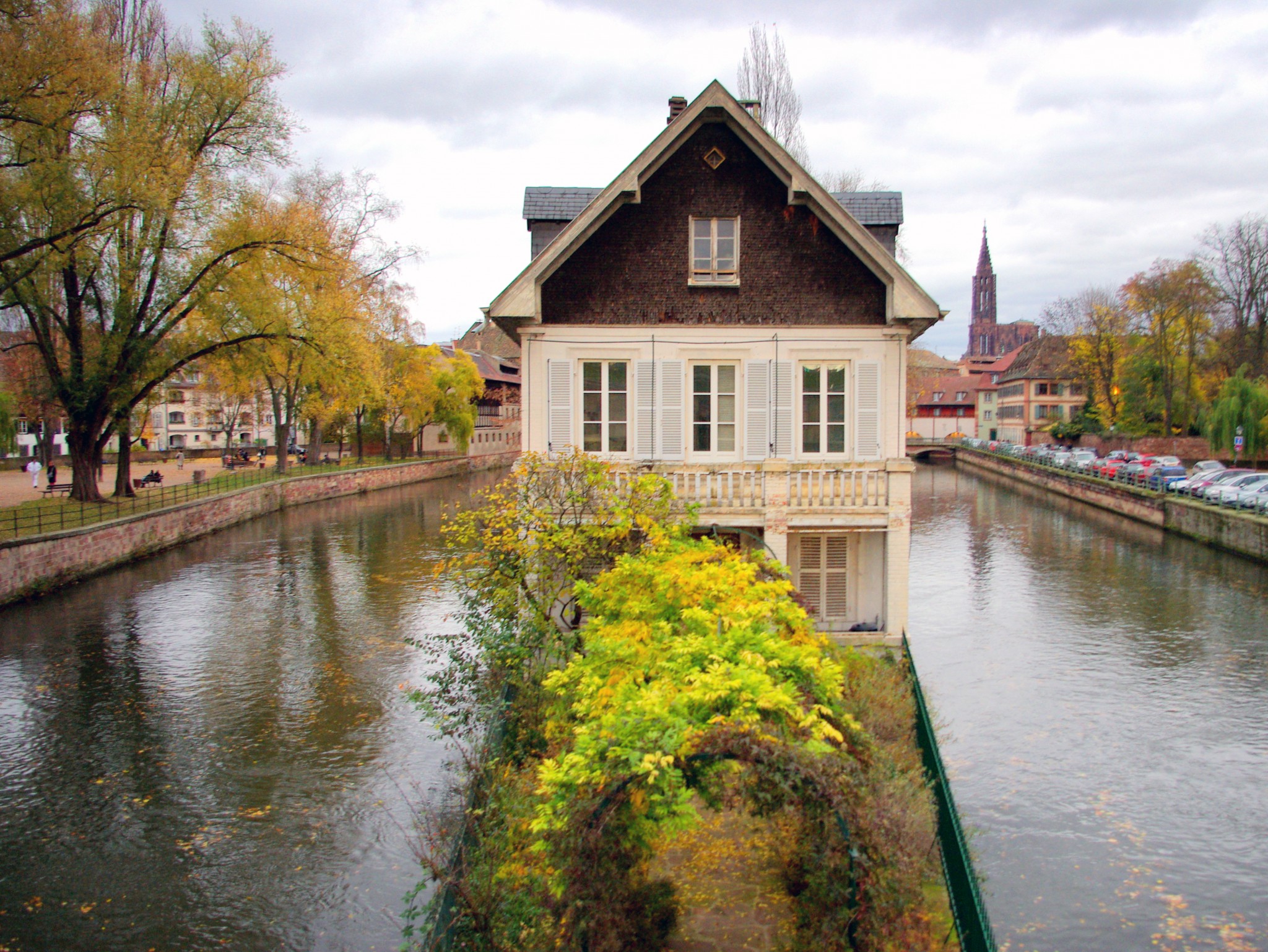
Behind the bridges, the river splits into four arms (Zornmühle, Disenmühle, Spitzmühle, and the navigation canal) where you can still see water mills, dams and locks. The German word “mühle” means “mill” and reminds us that the neighbours of the Petite France’s tanners were millers.
Le barrage Vauban – the Vauban Dam
A bit further south, the Vauban Barrage is one of the only buildings that remains from the old enclosure Tarade built around the city towards 1690.
Military engineer Vauban worked on the design of the dam. The “Grande Ecluse” (Great Lock) structure stretches over the river’s width, opposite the Covered Bridges.
At the top is a panoramic terrace from which you can appreciate a splendid view over:
- the Petite France district and its canals,
- the two bell towers of the peculiar Saint Pierre-le-Vieux Church (a bell tower for the Protestant and Catholic religions),
- and the Strasbourg Cathedral in the background.
Le Musée d’Art Moderne et Contemporain – The Modern and Contemporary Art Museum
Waiting to be discovered on the West side of the Vauban Barrage is the Museum of Modern and Contemporary Art building, established by Adrien Fainsilber in 1998.
Several works are displayed here: Monet, Gauguin, Vlaminck, Dufy, Gustave Doré, Picasso, Richier or Buren. The museum retraces the history of modern art from the 1850s to the present day, passing by impressionism, constructivism, fauvism and expressionism.
Next to it is the National Institute of Public Service (INSP). The school is responsible for assuring the selection of initial and continued education of French and international senior officials. It took over from the National School of Administration (ENA) in 2022 as a prominent French professional school. Its mission revolves around selecting and training top-level civil servants of the state, united under the unified body of State Administrators. The training programs offered by the National Institute of Public Service (INSP) seamlessly carry forward the legacy of ENA’s educational offerings. The prestigious school occupies an old 14th-century building, the former commandry of the Sovereign Military Hospitaller Order of St. John of Jerusalem.
La Tour du Bourreau – the Executioner’s Tower
Some metres north of Petite France, the Executioner’s Tower (Henckerturm or Tour du Bourreau) had a bad reputation in the Middle Ages because it was where the executioner hounded the poor victims that the city’s authorities had deemed them appropriate for “interrogation”. One of the local specialities was the “Stockhus” torture, an instrument in the form of a press, in which the condemned man’s feet would be locked.
Local legend still tells the incredible story of the tortured executioner! In 1565, the city’s executioner, Sébastien Rosenkrantz, was arrested for supporting and gathering a small group of crooks he taught to do mischief. The penalty was of the highest order, and after having been tortured, he was executed, and his lover was publicly flogged and banished from the city indefinitely.
St. Pierre-le-Vieux Church
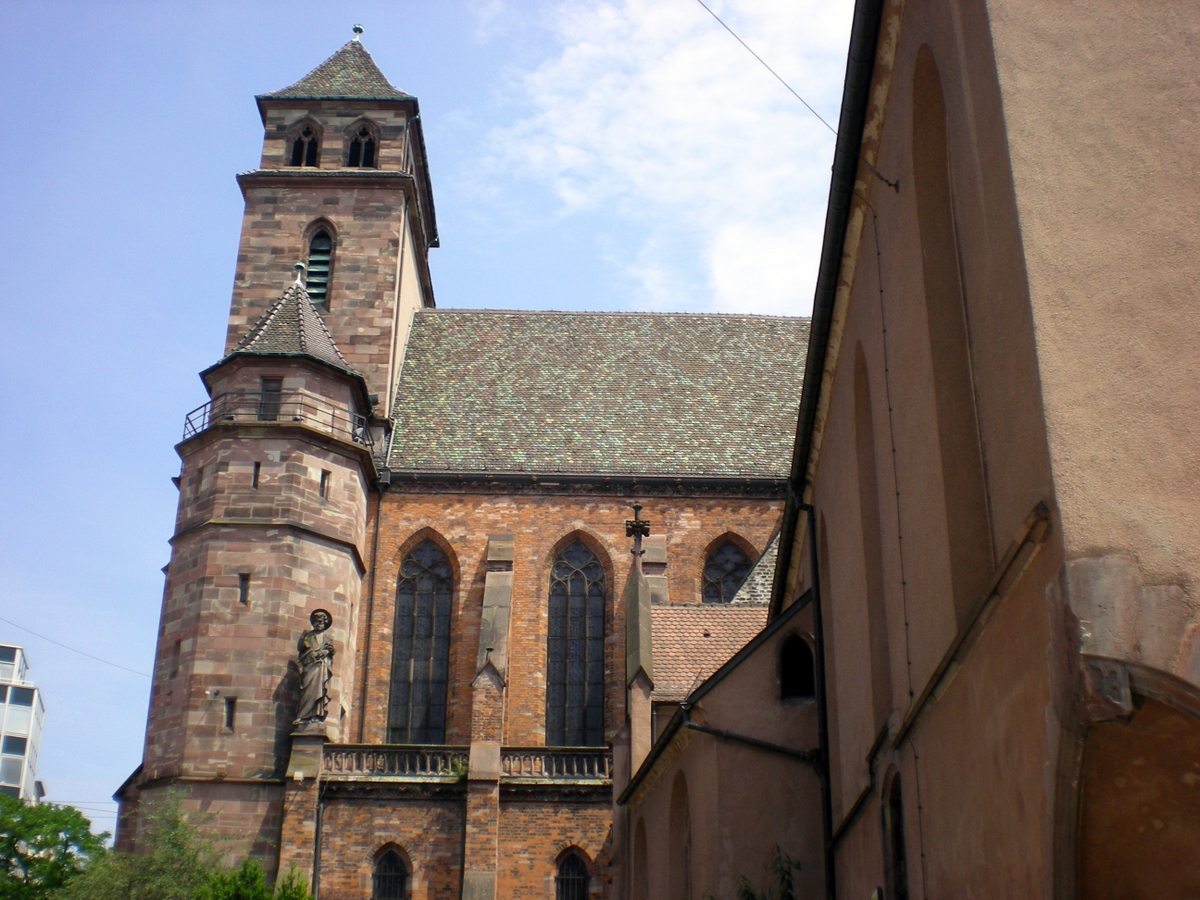
One hundred metres to the north stands the Saint-Pierre-le-Vieux church. It is not one, but instead, two churches juxtaposed one over the other. Its two unusual bell towers mark the religious landscape Strasbourg inherited as a city sharing Protestant and Catholic faiths.
An initial church was built in the Gothic style in 1389. It became one of the city’s seven Lutheran Protestant parishes in 1529. In 1683, the church became Catholic again and in 1867, ahead of an increase in the number of worshippers, the construction of a second building, perpendicular to the first, was decided.
Christmas in Strasbourg’s Petite France
The Petite France district is a charming little place to visit during Advent, where the Christmas decorations and illuminations are mainly treated with great care.
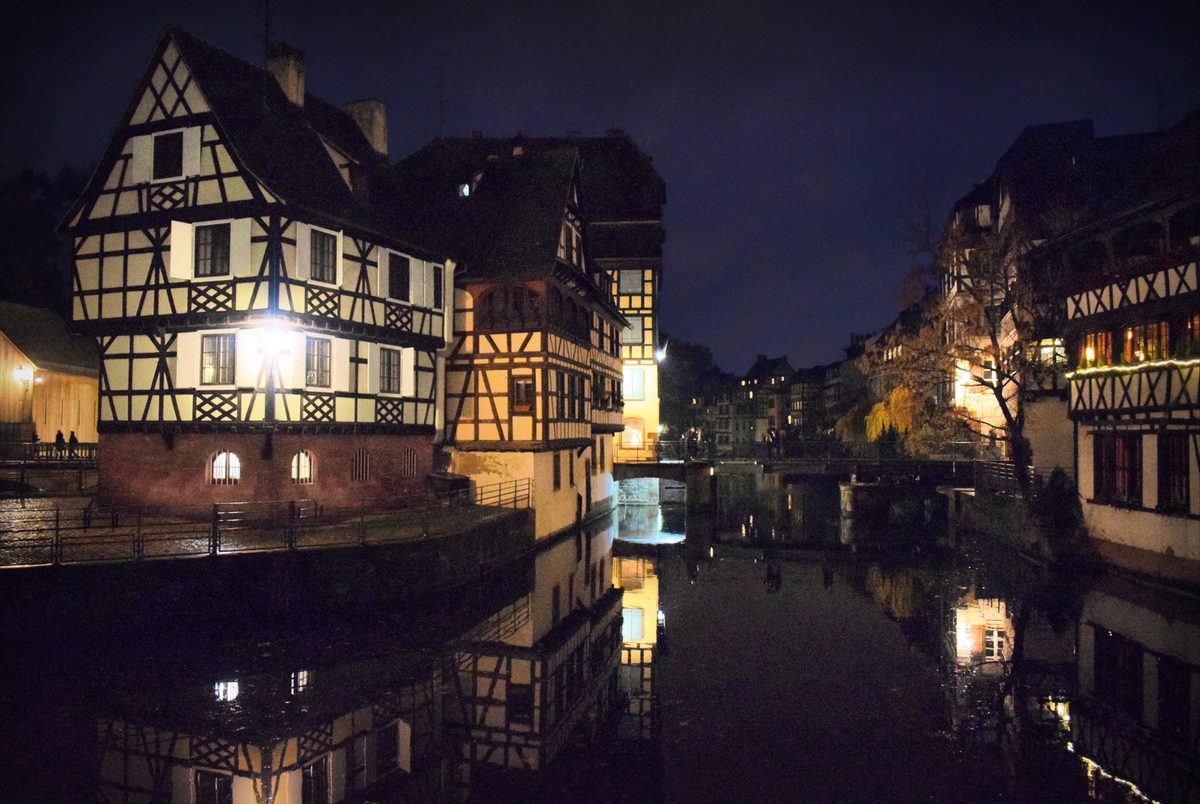

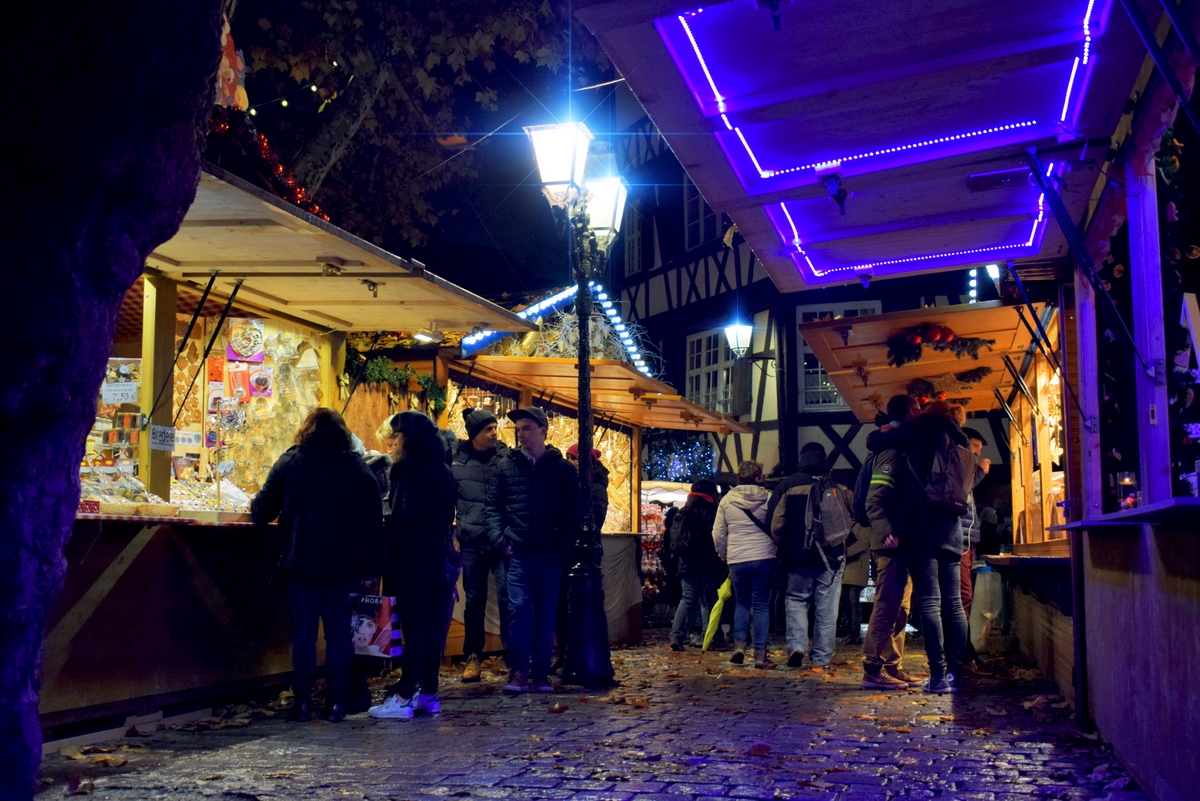

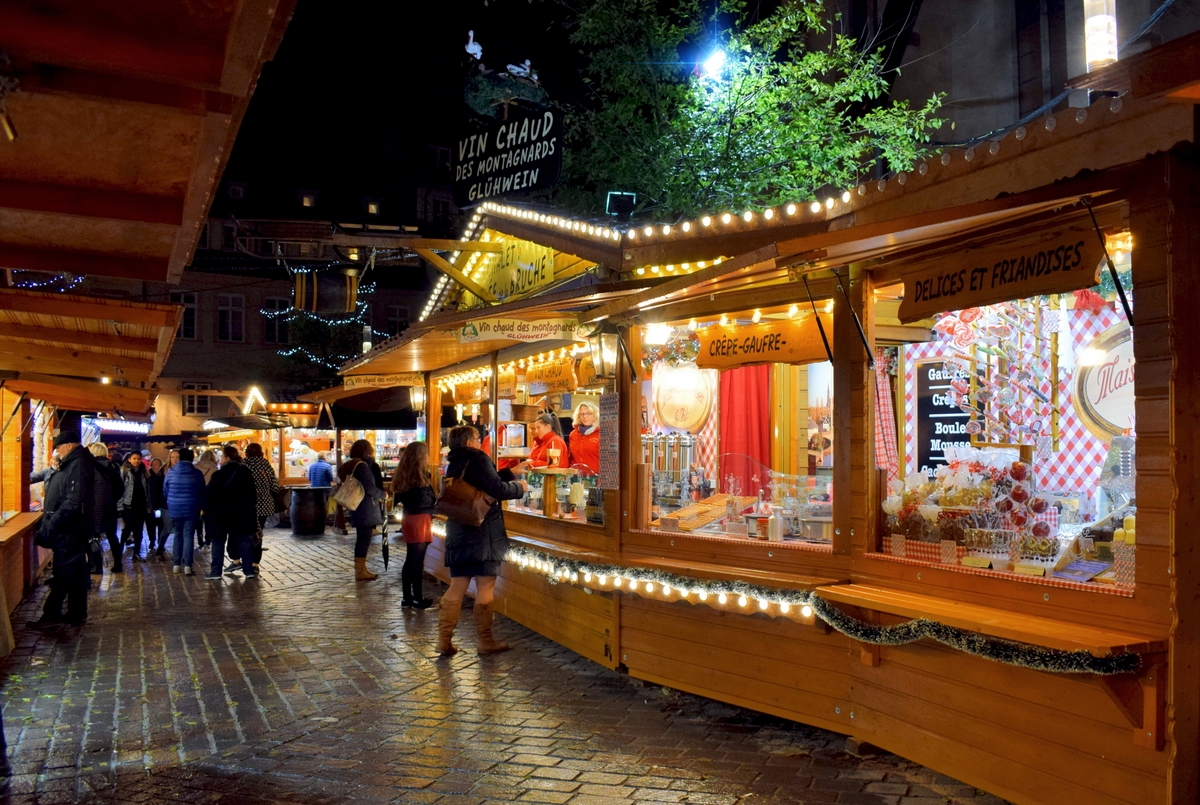
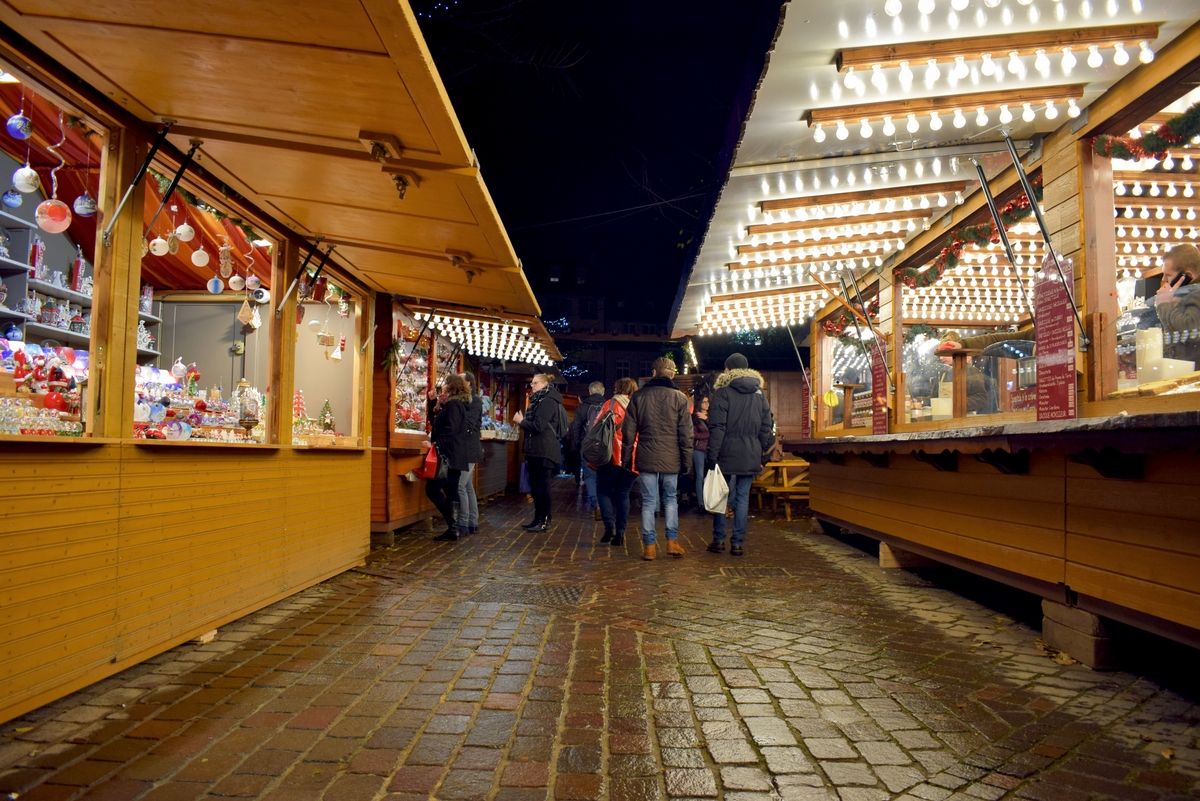
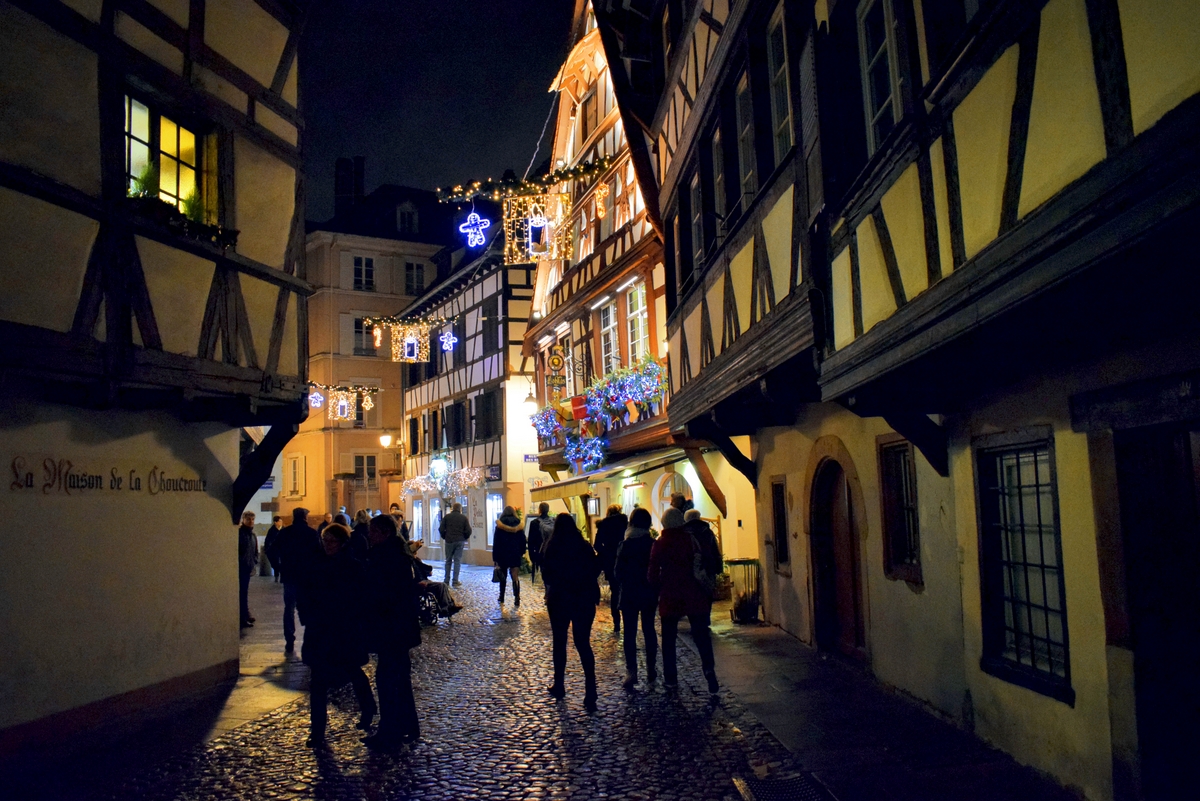
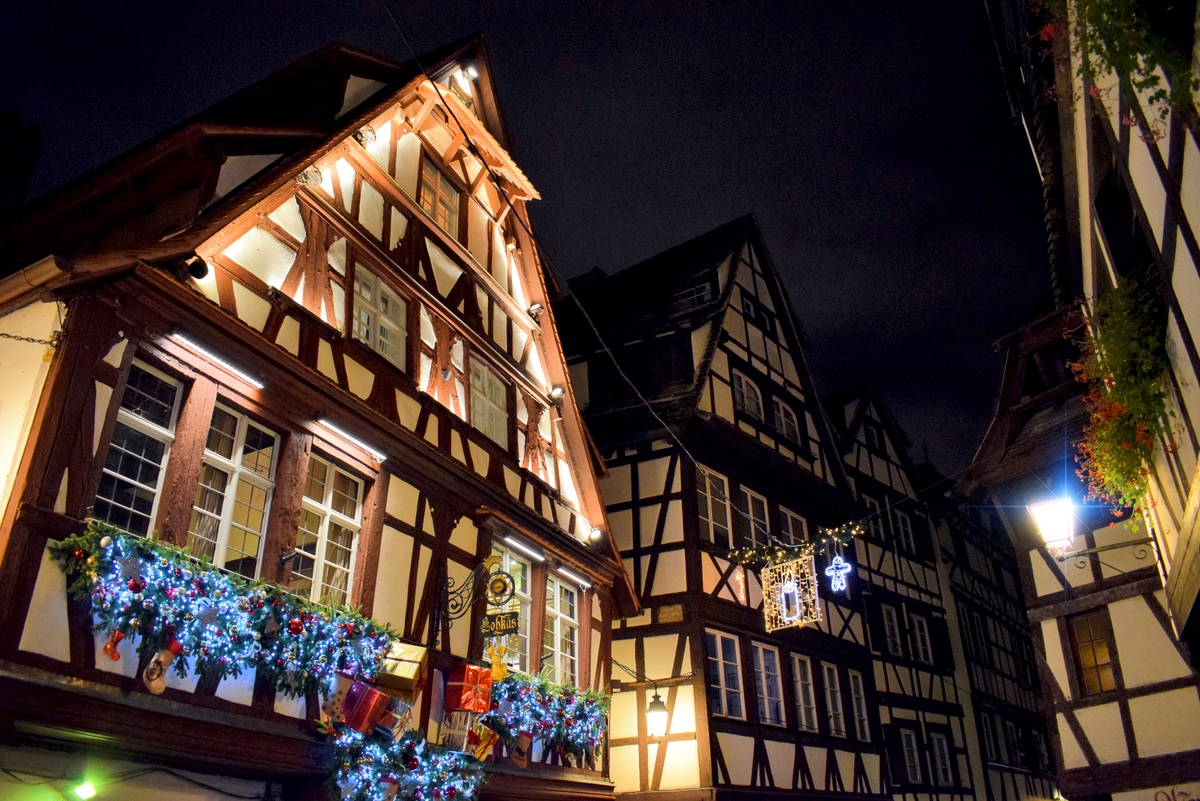
The Petite France of Strasbourg organises two Christmas markets: the “Invincible Small Producers of Alsace” market on Place des Meuniers and “The Trading Place of the Three Kings” on Place Benjamin-Zix.
Find out more about the Christmas Markets of Strasbourg.
More info about the Petite France
- Read this article in French on our blog Mon Grand-Est!
- Visit the website of the Strasbourg Tourist Board
English-French Vocabulary
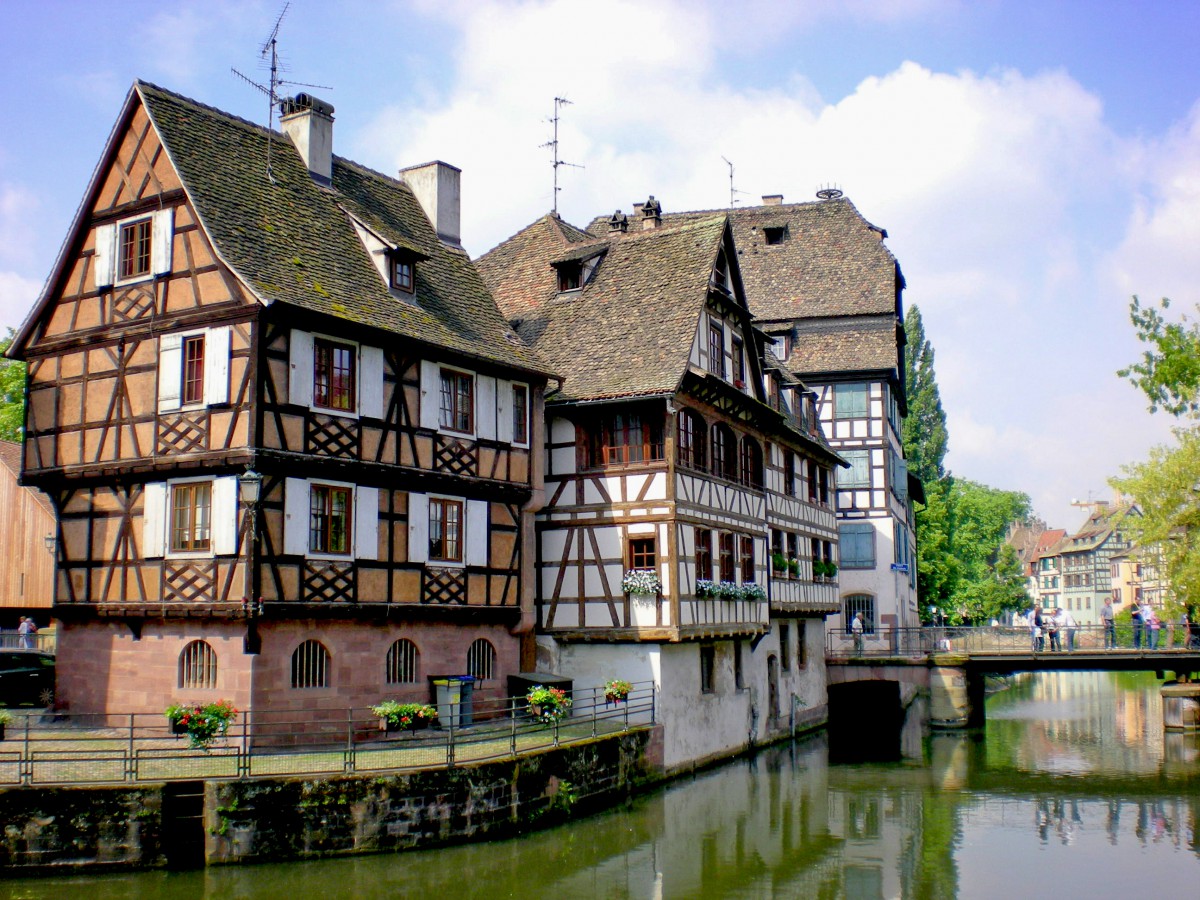
(f) for féminin, (m) for masculin and (v) for verbs
- Alsace = Alsace (f)
- bridge = pont (m)
- to build = construire (v)
- church = église (f)
- dam = barrage (m)
- to decorate = décorer (v)
- district = quartier (m)
- executioner = bourreau (m)
- fisherman = pécheur (m)
- Free City = Ville Libre (f)
- Gothic art = art gothique (m)
- guild = corporation (f)
- half-timbered house = maison à colombages (f)
- Holy Roman Empire = Saint-Empire romain germanique (m)
- lock = écluse (f)
- Marshal = Maréchal (m)
- mausoleum = mausolée (m)
- Middle-Ages = Moyen-Âge (m)
- miller = meunier (m)
- organ = orgue (m)
- parish = paroisse (f)
- Renaissance art = art de la renaissance (m)
- Rhine = Rhin (m)
- Rhineland = Rhénanie (f)
- Romanesque art = art roman (m)
- tanner = tanneur (m)
- tower = tour (f)



